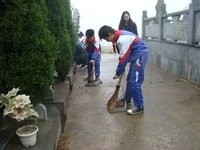Suzhou Shengyifurui Electronic Technology Co.,Ltd.
Suzhou Shengyifurui Electronic Technology Co.,Ltd.
Suzhou Shengteng Electronic Co.,Ltd. are ushering in the Qing Ming Festival, do you know what’s the manners and customs of Qing Ming Festival?
Flying kites is an activity favored by many people during the Qingming Festival. Kites are not only flown at day time but also in the evening. Little lanterns are tied to the kite or to the string that holds the kite. And when the kite is flying in the sky, the lanterns look like twinkling stars that add unique scenery to the sky during the night. What makes flying kites during this festival special is that people cut the string while the kite is in the sky to let it fly free. It is said this brings good luck and that diseases can be eliminated by doing this.
Because Jie Zitui died embracing a willow tree, the willow is believed to have miraculous powers against evil. During the Qingming Festival, willow branches are hung on door fronts and used to sweep the tombs.
The common swing has offered sport to many children throughout the world. During the Ming Dynasty, swinging was a designated recreation on the Qingming Festival, also known as the Clear and Bright Festival or the Tomb Sweeping Festival. Because the festival generally occurs in mid-spring, many also use the occasion for family outings.
According to the Annals of the Ming Court, this day was also called Swing Festival, when swings were suspended in the Hall of Earthly Peace of the Forbidden City and in all the residential complexes where palace ladies resided. Ladies of the imperial household wore colorful silks especially made for the occasion, and amused themselves on swings.
Qingming Festival is also a time to enjoy a cup of tea, because the tea produced around Qingming Festival is said to be with high-quality.
The plucking of tea usually takes place in spring, summer and autumn. Tealeaves from different seasons have different appearances and inner quality. Tealeaves plucked in spring, from early March to the Qingming Festival, are called “pre-ming tea” or “first tea.” Its color is of light jade green, and tastes pure with a touch of acerbity. Two weeks after Qingming, it is the Guyu solar term on the Chinese lunar calendar. During this time, the Jiangnan area will experience a round of fine precipitation for the moistening of crops. And this brings forth the second peak season of tea picking. Tealeaves collected after the Qingming but before Guyu are called “pre-rain tea,” and the spring tea picked after that are called “post-rain tea.” Spring tea’s prices usually vary according to the time the tealeaves were picked, with the prices being higher for earlier tea and lower for the later. In most cases, early-spring green tea is the best in quality among all available tea.
Poems related with Tomb-sweeping Day.


